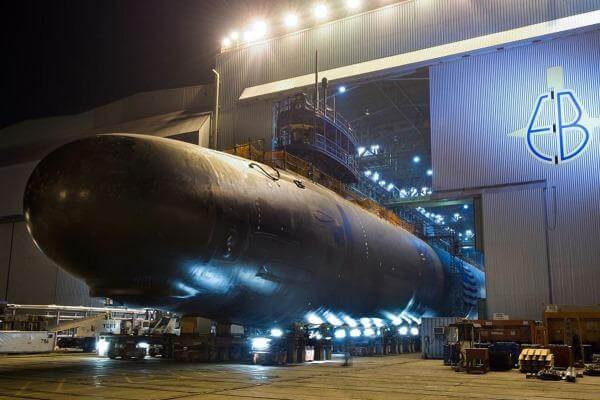U.S. Navy leaders say the service is making progress developing new technologies to ensure the U.S. retains its technological edge in the undersea domain – as countries like China continue rapid military modernization and construction of new submarines.
When asked about the pace of Chinese undersea military construction and modernization, the Navy's Director of Undersea Warfare said the Navy is focused on sustaining the research and development, or R&D, sufficient to ensure the U.S. retains its technological superiority.
Some of the efforts are yielding near-term results in the form of the USS South Dakota, a prototype Virginia-class attack submarine engineered with a series of high-tech adjustments, Rear Adm. Joseph Tofalo told Military.com.
The innovations, which emerged from the Navy's R&D program, include quieting technologies for the engine room to make the submarine harder to detect, a new large vertical array and additional coating materials for the hull, Tofalo said.
"I have an R&D program that I fund and the sole purpose is to make sure we don't get surprised. It is about understanding the science and technology and doing our due diligence from an academic standpoint to make sure we look at all the threat vectors -- whether that be hydrodynamics, acoustics, lasers -- and all the science that is associated with all that they do," Tofalo said.
While many of the details of these new technologies are not publically available, Tofalo said some risk reduction work on these innovations has been done on the other submarines such as the USS Dallas and USS Maryland.
"The South Dakota will deliver in the next few years. I would like to think that our technological ability to maintain undersea dominance is going to help us with the capacity issue that a country like China represents," he said.
Some prominent lawmakers, such as Rep. Randy Forbes, R-Virginia, are concerned that budget constraints may impede the Navy's ability to pursue technological superiority through R&D.
"I think the number one thing that we all know is we have to get rid of sequestration and the impact that is having. It is very difficult to do research and development when we are worried about our readiness," Forbes told Military.com in an interview. "We have to be constantly monitoring what is happening with peer competitors."
Tofalo also said the U.S. military's technological is shrinking, requiring the U.S. to re-think the role of manned submarines and prioritize innovation in the realm of undersea warfare.
Defense analysts have also raised the specter that the U.S. is losing its military technological edge over adversaries. This is requiring the U.S. to re-think the role of manned submarines and prioritize innovation in the realm of undersea warfare, according to a report by the Center for Strategic and Budgetary Assessments.
"America's superiority in undersea warfare results from decades of research and development, operations, and training. It is, however, far from assured. U.S. submarines are the world's quietest, but new detection techniques are emerging that don't rely on the noise a submarine makes, and may make traditional manned submarine operations far more risky in the future. America's competitors are likely pursuing these technologies even while expanding their own undersea forces," writes the report's author Bryan Clark.
In the report, Clark details some increasingly available technologies expected to change the equation regarding U.S. undersea technological supremacy. They include increased use of lower frequency active sonar and non-acoustic methods of detecting submarine wakes at short ranges. In particular, he cites a technique of bouncing laser light or light-emitting-diodes off of a submarine hull to detect its presence.
"The physics behind most of these alternative techniques has been known for decades, but was not exploited because computer processors were too slow to run the detailed models needed to see small changes in the environment caused by a quiet submarine. Today, 'big data'" processing enables advanced navies to run sophisticated oceanographic models in real time to exploit these detection techniques," Clark writes.
-- Kris Osborn can be reached at Kris.Osborn@military.com





























